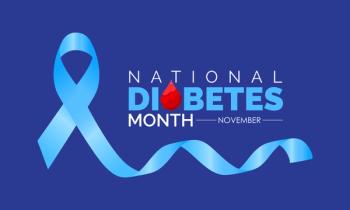
Approximately 25% of Eligible Survivors of Breast, Cervical Cancers Did Not Receive Follow-Up Instructions for Post-Treatment Screening
When physicians followed up, rates of screening improved for breast and cervical cancer by 50% and 250%, respectively, among eligible cancer survivors.
Mariam F. Eskander, MD, MPh, surgical oncologist, Assistant Professor of Surgery at the Rutgers Cancer Institute of New Jersey, discusses a recent study that evaluated breast cancer screening (BCS) and cervical cancer screening (CCS) after surviving cancer with Pharmacy Times. She is part of a team of researchers at Rutgers who are presenting findings of a recent study in a poster titled “Survivorship care and breast and cervical cancer screening” at the 2023 American Society of Clinical Oncology (ASCO) Annual Meeting this weekend in Chicago, Illinois.
PT Staff: On a high level, how does screening impact long-term outcomes for cancer survivors?
Mariam F. Eskander, MD, MPh: So there are an estimated 80 million cancer survivors in the United States. So lots of people have had a cancer diagnosis and were treated and survived. And although they remain at risk of recurrence of the primary cancer that they had, they're also at risk for all the common cancers that the general population gets screened for, like BC and CC. And we know that mammograms and pap smears allow for early detection of BC and CC, and they reduce the risk of dying of those cancers. So as cancer treatments are improving over time, and cancer survivors are living longer, we have to recognize and work to mitigate their risk of developing other cancers.
PT Staff: Can you discuss findings from the analysis of breast cancer and cervical cancer screenings among eligible participants?
Mariam F. Eskander, MD, MPh: In our study, we examined a cohort of women with a history of cancer, who are eligible for BCS and CCS to understand the impact of the components of survivorship care on post-treatment screening. So a survivorship care plan typically consists of a treatment summary that includes information about a patient's cancer history, and then a recommended follow up care plan for what should happen now that the patient has survived cancer. And we found that women who reported receiving follow-up instructions after surviving cancer are most likely to get screened for BC and CC.
PT Staff: How could it be that approximately 25% of physicians or persons providing survivorship care did not provide patients with follow-up instructions for future screenings?
Mariam F. Eskander, MD, MPh: I think that the explanation could be due to a couple of things. One is because this is survey data; sometimes patients just don't remember, right? You asked somebody a few years later, “Hey, did you get follow-up instructions after surviving cancer?” They can't remember. And that's called recall bias.
So for any study that asks patients questions about something that happened in the past, that's a possibility. The other possibility is that it's real. And that although we like to think that we are diligent about follow up instructions for cancer survivors, that might not be the case. And you're right, so we found only three-quarters of eligible survivors reported receiving follow-up instructions, which is certainly not as many as we like. And it points out, I think, a possible weakness in our in our healthcare system that we should try to do something to combat. And what's interesting is, after adjusting for other factors, we found that the simple act of having received follow-up instructions increased the likelihood that a woman would get screened for BC by almost 50%. And that she would get screened for CC by 250%. So the simple act of telling someone, “here are follow-up instructions for the future” really makes a difference in how likely they are to get screened. And it is an easy thing, and it just might not be happening as often as we like.
PT Staff: It appears like more CCS-eligible survivors were screened after receiving follow-up instructions compared to BCS-eligible survivors - are there any factors that may influence this disparity?(Tumor, demographic, severity, treatment regimen…?)
Mariam F. Eskander, MD, MPh: So our data does suggest that the screening rates for CC are higher than for BC after receiving follow-up instructions, and just higher in general. And one reason behind the difference could be due to the fact that there are differences and the recommendations for CCS and BCS. So a human papillomavirus (HPV) test in the past 5 years counts as CCS versus needing to get a mammogram every 2 years to be up to date with BCS. and so, one is just a little more difficult, or prerhaps more onerous, than the other, which could explain the difference in rates of screening. But the difference could also be due to recall bias or demographic or geographic differences in the populations who were surveyed.
PT Staff: Is it possible that there is a psychological barrier to screening among cancer survivors?
Mariam F. Eskander, MD, MPh: I think that it is really smart of you to bring up some of the psychological barriers. And those are certainly less studied than some of the more objective behaviors and actions of cancer survivors. But absolutely. From personal experience, I think that after somebody has beaten cancer, or undergone what potentially was a long and difficult path, to survive cancer, there are definitely mental health and fears that that persist after that. And you're right, maybe part of it is that [they] don't really want to know—it’s like some amount of denial. Or part it is the opposite, which is “I beat cancer,” or “maybe now I'm invincible and now I don't have to undergo screening for other things,” which is, again, I think, where the provider plays a very important role. I think the provider must make it clear to someone that after surviving cancer, there are still risks moving forward. There's a risk of their own primary cancer coming back. And part of the follow up instructions are, this is the plan for surveillance of your primary cancer, because most patients who are 5 to 10 years or even further out have a risk of their primary cancer returning, which is of course scary and just needs to be addressed head on. And then the other is, “Hey, you're still at risk of all the standard cancers that the American population is at risk for”. And in our study, we looked at BC and CC. And so, it's really the follow-up instructions are 2-fold. They’re about your cancer and they're about other cancers. And I do think that we might be better at talking about surveillance for the primary cancer because it is the cancer that is in that patient's mind. And maybe not so much about, “hey, you're a woman and your age suggest that you're still at risk of BC [so] you should get screened for breast cancer.” Maybe that is even less upfront in people's minds, and it should be.
PT Staff: How could follow-up instructions be included in a survivorship management plan?
Mariam F. Eskander, MD, MPh: You can guess that the efficacy of telling someone, “Hey, congratulations on beating cancer, you should get screened for other cancers,” versus actually having a plan in place or a schedule in place— you could imagine that that one would be more effective than the other. I imagine that the most standard way that follow-up instructions are included is in written form. So a patient should get a piece of paper that says “this is your plan for surveillance for primary cancer. And also don't forget to get screened for other cancers.” And ASCO actually has some paper templates for this, which are very useful. But I do think that having a schedule for surveillance versus saying, “Hey, don't forget to get screened for other cancers” is very different. I think knowing that, “Oh, in the spring of 2024 I need to get a mammogram” is different than saying, “Hey, you need a mammogram every couple of years.” And so I do think we need to be a little more diligent about the level of detail that we provide patients. And our study did not look at the specific format of the follow-up instructions. It was simply [asking] “Did you get instructions?” and we don't know what form those instructions were given in. And we don't know if one form is more effective than the other. And so I do think that's something that that can be tested in future studies.
PT Staff: How do your findings impact future research opportunities?
Mariam F. Eskander, MD, MPh: There are so many avenues. I think we need to figure out how to increase standard cancer screening among cancer survivors. And our study suggests that one way to do that is to improve our communication with those patients at the point of survivorship care. And as we talked about, I think, I think follow-up care instructions that include where to obtain routine cancer checkups seem to work, because that is what the question that was asked in this survey. It's that the follow-up instructions included where to obtain routine cancer checkups. But that's a very general term. And so future research can focus on why some patients are not getting these instructions, and how to make the instructions as effective as possible.
PT Staff: Do you have anything else that you’d like to address about survivorship care?
Mariam F. Eskander, MD, MPh: Thank you so much for this interview. And I'm just so delighted to see interest in improving the health of cancer survivors. As the population is growing and living longer, we need to be more attuned to their needs and their values. And we this is just a very important population that needs more research into their needs.
Newsletter
Stay informed on drug updates, treatment guidelines, and pharmacy practice trends—subscribe to Pharmacy Times for weekly clinical insights.


















































































































































































































